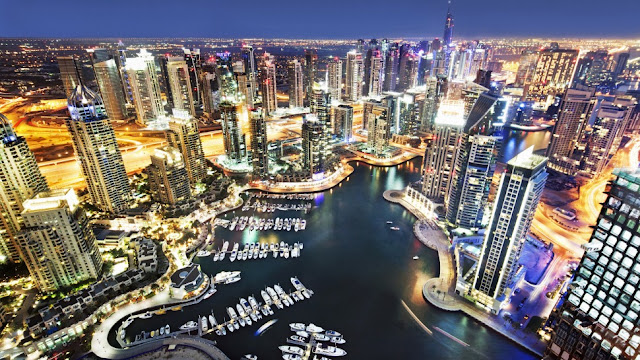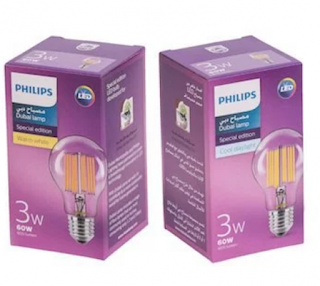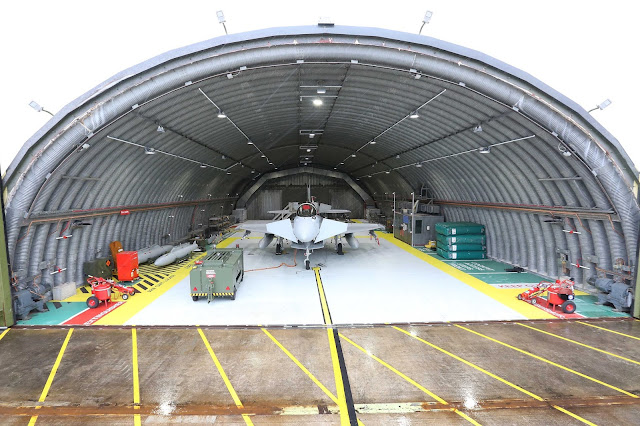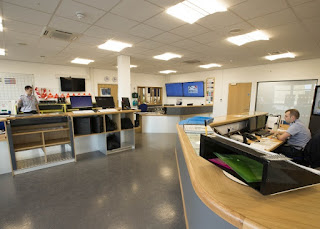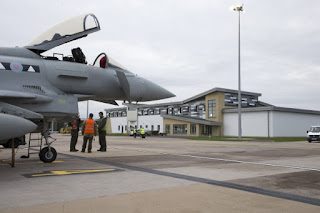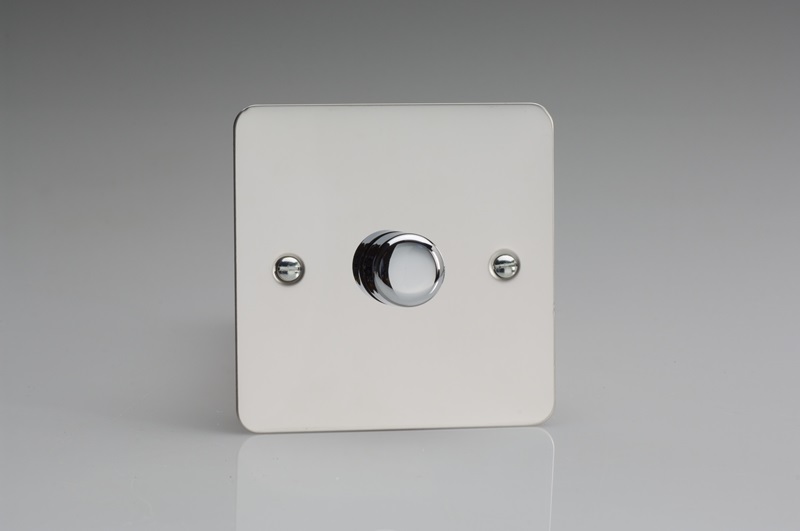CAT | LED panels
13
80% of UK school kids ‘at flicker risk’ from old lights
Comments off · Posted by admin in LED, LED panels

Professor Wilkins says it’s ‘plain enough’ that bad flicker from magnetic ballasts in schools can impair learning. A switch to high frequency gear, or LED luminaires, would fix the problem.
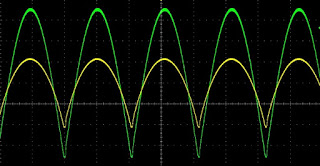
Because of the way magnetic ballasts manipulate the 50 Hz sinusoidal waveform of the input voltage, they deliver a light output that flickers at 100 Hz. This frequency is in the danger zone of harmful flicker, which could impair learning.
‘Unfortunately 80 per cent of our schools are still lit with lighting that flickers at 100 hertz’, he told a Lux conference on lighting fixture design in London this month. ‘It causes headaches and its causes anxiety. It’s there all the time. Whether it impairs their learning, seems to me to be plain enough.’
Although people can only directly perceive fluctuations at frequencies up to about 70 Hz, human vision is adversely affected by light fluctuations up to 200 Hz. Visual performance is especially degraded by flicker in the 100 Hz to 200 Hz range and in general, younger people are likely to perceive lower level and higher frequency flicker than older observers.

Professor Arnold Wilkins says that 100 Hz is present all the time under magnetic ballasted fluorescent fittings in schools. ‘Whether it impairs their learning, seems to me to be plain enough’ he told the Lighting Fixture Design Conference in London.
‘100 hertz should be avoided.’ The solution is to upgrade to high frequency control gear for fluorescent or LED. ‘It’s a simple as that.’
Flicker at 100 Hz is prevalent in older fluorescent light fittings with magnetic ballasts which were popularly installed in schools before the introduction of high-frequency electronic control gear and LED panels. Typically, magnetically ballasted fluorescent luminaires will exhibit flicker of between 10 and 20 per cent of output, and a ‘compact flicker degree’, or CFD, of over 20 per cent. Prolonged exposure leads to eyestrain, headaches and anxiety.
Professor Wilkins has a number of high profile awards to his name, including the Leon Gaster Memorial Award, the Walsh Weston Memorial Award and the Owen Aves Medal and has been made a honorary fellow of the College of Optometry.
LED Ceiling panels are available from Novel Energy Lighting. We stock multiple quality brands, such as Thorn, Ansell, Philips, and MEGE:
flicker free · led 600x600 · LED Ceiling Panels · led flcker · led panels · low flicker · Novel Energy Lighting · school lighting
13
Ansell LED Infinite Ceiling Panel, 600mm x 600mm, 40W, IP44, 7yrs
Comments off · Posted by admin in LED, LED panels
We’ve got a special deal going on the extremely high quality Ansell LED Infinite Ceiling Panel:
ANSELL AIRMLED/CW: Ansell Infinite LED Recessed Panel Cool White 40W LED 600 x 600 – Tridonic Driver with loop-in, loop-out wiring, IP44-rated, 7YR warranty.
Special offer price, AS LOW AS £34.99ea +VAT !
Ansell are a leading manufacturer of quality internal and external lighting solutions for commercial, industrial and retail applications. They include the very latest in energy saving and efficient LED luminaires.
Ansell Infinite is a high performance LED flat panel available in cool white (4750K). There is a range of accessories available including Ansell’s new emergency POD which will enable users to convert any Ansell Infinite panel in to an emergency fitting.
Key Benefits:
– High performance LED flat panel which outperforms Moduni 3x14W T5
– Low glare and even light distribution ensures suitability for most applications
– Tridonic Driver with Loop-in, Loop out Wiring Facility
– Maintenance free instant light output and unlimited switching
– 40,000 hours average lifetime
– Non-dimmable
– Supplied with integral driver
– IP44 Rated
– 7 Year Manufacturers Warranty
– Colour / Finish: Silver Grey
Applications: Widely used in hotels, meeting rooms, offices, hospitals, schools, factories, commercial lighting, shopping malls, supermarkets, and so on.
595x595 · 600x600 · AIRMLED/CW · ansell · ansell infinite led · LED Ceiling Panel · led panel · Novel Energy Lighting
6
Dubai rules all new properties must fit Philips LED lamps
Comments off · Posted by admin in LED, LED panels, LED Spots, LED Tubes, Philips LED
Fitting Philips ‘Dubai Lamp’, will be made the basic requirement for getting a Building Completion Certificate in Dubai.
Philips struck up a good deal!.. All new buildings in Dubai will soon be compelled by law to install specific LED lamps, the municipality has ruled, after striking a deal with Philips Lighting to supply millions of light sources to the emirate.
Authorities in Dubai signed a five-year contract with Philips to create the ‘Dubai Lamp’, which, it it is claimed, will be the first commercially available 200 lumen per Watt LED lamp.
The new fixtures will replace 80 percent of traditional lights currently in the emirate’s residential buildings, and, as of this year, all new buildings constructed in the city will have have to feature the Philips LED.
Fitting LED in new buildings will be made the basic requirement for getting a Building Completion Certificate, by the end of this year.
The initiative will initially focus on new buildings and big complexes such as schools, hospitals, mosques and shopping centres. A study will also be undertaken to develop a strategy of implementation for older buildings, in an attempt to ensure that the scheme ensures a wider legacy and that energy savings and a positive environmental impact continue to grow overtime.
Philips has been commissioned by the Dubai authorities to manufacture and supply two million of the ‘Dubai Lamps’, which will not contain mercury or generate heat. The Dubai Municipality plans to install 10 million Dubai Lamps before the end of 2021.
‘It will be made the basic requirement for getting a building completion certificate. This will be beneficial for both sides. The owner of the building will be able to save a lot of money on energy charges and we will able to protect the environment,’ Hussain Nasser Lootah, director general of Dubai Municipality, told The National.
‘In the beginning, we will concentrate on new buildings and we will complete a study of old buildings to see what can be done.’
Lootah said the latest agreement which is in line with government directives, supported the Dubai Integrated Energy Strategy, which targets a 30 percent reduction in energy consumption by 2030, and the Dubai Carbon Abatement Strategy, which is aimed at reducing carbon emissions by 16 per cent by 2021.
The lamps will be available in four models, both in cool daylight and warm white colours. That includes 1W candle lamps to replace the 25W incandescent lamp, 2W bulbs to replace 40W incandescent lamps, 3W bulbs to replace 60W incandescent lamps, and the 3W MR16 Spot to replace 50W halogen spots.
Novel Energy Lighting supplies the full range of Philips LED lamps, tubes, and luminaires. Please visit us today, or email: sales@novelenergylighting.com or call (0208-540-8287) to discuss you project needs.
dubai lighting · LED lamps · Novel Energy Lighting · philips led · Philips LED bulbs · philips led luminaires · Philips led panels · philips led tubes · philips lighting
27
LED helps to make RAF more environmentally friendly
Comments off · Posted by admin in LED, LED panels
Despite facing severe budget restraints, a project has been delivered that is both energy efficient and sustainable and the RAF’s decision to use LED lighting, for one of first times on a new project, played an important role.
The building has been so well received within the defence community that it has been awarded the Ministry of Defence’s prestigious Sanctuary Award for Sustainability.
RAF Lossiemouth often bears the brunt of the West’s increasingly fractious relationship with Russia, with RAF Typhoon fighters being dispatched from the base on a regular basis to intercept Russian aircraft, which often play cat and mouse with Britain’s air defences. This means the base is constantly in use.
Sustainability was put at the heart of the project and energy efficiency was key. The new building and the refurbishment of the older buildings also had to be completed in a robust fashion, so as to ensure long, low-cost use.
In order achieve these aims, LED was quickly considered and pitched.
‘There were a number compelling reasons to change the lighting in the older facilities, principally because the buildings involved are used by the squadron 24 hours a day. But like any project that involves spending public money, it had to be justified,’ commented senior project manager at the Defence Infrastructure Organisation, Jim Ellistone , who worked on the project.
The new building would have a number of uses, requiring different levels of lighting. Besides the executive and administrative offices, the new headquarters building would provide a state of the art secure facility that would be used to plan and brief complex flying operations.
The building would also accommodates the Squadron’s engineering and logistics facilities and the Survival Equipment Section, which maintains all of the high tech equipment worn by Typhoon pilots during flight.
‘Everyone involved in the process quickly recognised the benefits of new lighting, the figures showed that, due to energy savings, the project would pay for itself in just over four years,’ Ellistone added.
In defence projects, the cheapest capital option is often used, due to the budget constraints that the MoD is placed under by the government of the day, however the benefits of LED were quickly provable to authorities.
‘This was an easy change to sell and was, in many ways, like pushing on an open door. The benefits of LED are now well established and we knew that a case for the technology had to be put forward at the first planning stage,’ Ellistone commented.
The highly intricate work that RAF engineers have to carry out on the Typhoon fighters, which are some of the RAF’s newest and most agile aircraft, means that excellent light quality is required. Such is the 24-hour nature of the base, repairs could be needed any time during the the day and night.
The aircraft are stored under concrete Cold War era Hardened Aircraft Shelters (HAS), which had not been internally upgraded since the days of Ronald Reagan and Mikhail Gorbachev. Energy efficient LEDs, offering the necessary light levels were installed as replacements to older models. LEDs were also used in the lines on the base’s concrete floor, which the aircraft use as guidance when they pull forward.
‘We had to be careful when specifying fixtures for the HAS, when the jet engines run in the hangers, fumes come from the wings and rise upwards,’ Ellistone said of the work. ‘We had to make sure, in these circumstances that the lights did not melt.’
The main squadron headquarters were delivered a month early, with a saving on the original tender target price of more than £1 million.
In reviewing the project on completion, the Combined Project Delivery Team came to the conclusion that a ‘real and deep sustainability gain’ was made by ‘stepping back’ to look at the fundamentals of what they were being asked to do.
This project is an example of reasoned arguments being used to build up a case for change and then, in timely fashion, a sustainable solution being agreed and delivered on time and within budget.
Visit www.novelenergylighting.com to explore our range of office and warehouse LED lighting, or call us today: 0208-540-8287
led hanger lighting · led high bays · led lighting · led office lighting · led panels · led tubes · led warehouse lighting · Novel Energy Lighting
28
Government invests £5 million to help keep the lights on
Comments off · Posted by admin in LED, LED downlights, LED panels
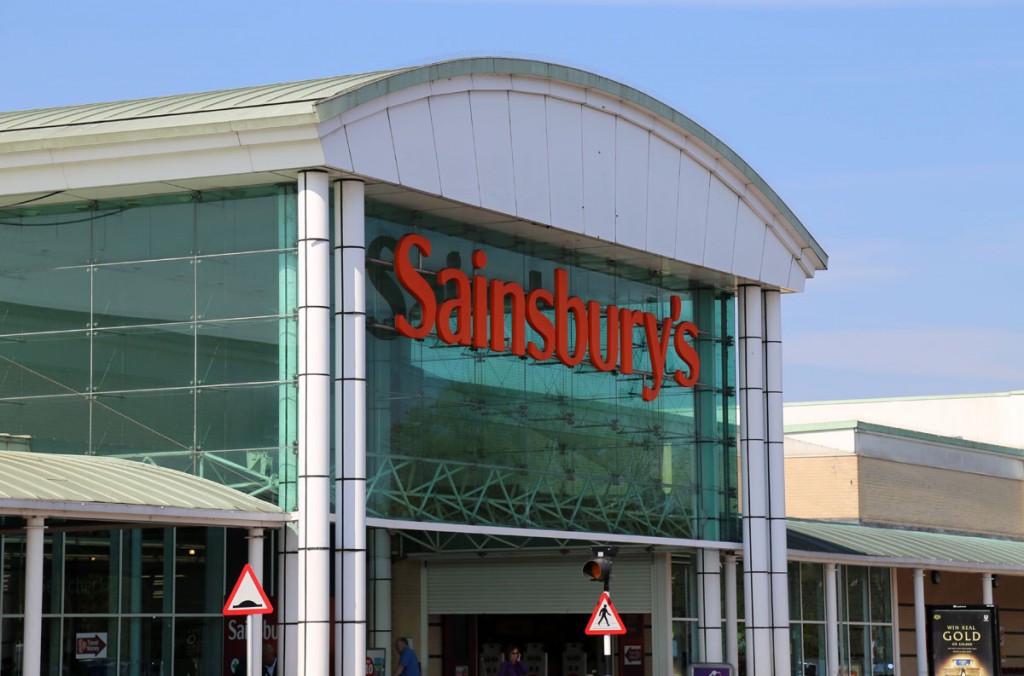
Sainsbury’s is one of a number of companies to bid for an Electricity Demand Reduction grant, as Whitehall eyes ways to keep the lights on in winter.
The Government is investing nearly £5 million to encourage leading UK firms such as Sainsbury’s, to install energy efficient lighting.
The money is part of an attempt by Whitehall to reduce peak time energy levels as fears rise that the National Grid will not be able to cope with electricity demands this winter, leading to nationwide blackouts.
A string of leading companies, including British Gas, Sainsbury’s, Sony and BAE Systems, have bid for funding in the second auction of the Electricity Demand Reduction (EDR) pilot.
Plumbing firm Wolseley UK received an EDR grant of £100k and is using the money to kit out its distribution centre with upgraded LED lighting.
The company claims that the new fixtures will reduce its electricity demand by 236,000 kWh, which is enough energy to power more than 300 homes.
Wolseley worked closely with Cloudfm on the maintenance work, a partnership that has also led to Wolseley’s head office in Leamington Spa being awarded a BREEAM “Excellent” rating.
The scheme works by encouraging consumers to provide capacity in the form of megawatts to help the UK meet its energy efficiency targets and reduce pressure on the National Grid. The pilot also reduces the energy bills of those involved.
The Government had originally allotted £6 million to the pilot, but a lack of uptake meant that not all the money was allocated.
This is the second time that an EDR auction has failed to reach its target, the first, held last year, saw only £1.28m out of a total of £10 million being snapped up.
edr · electricity demand reduction · energy reduction · LED downlights · LED lamps · led lighting · led panels · LED retrofit · led tubes · Novel Energy Lighting
10
Two-minute explainer: Tunable-white LEDs
Comments off · Posted by admin in LED, LED downlights, LED panels, LED Spots

Tunable-white lighting is one of the biggest trends in commercial lighting. LED developers have taken a serious grip on the photo-biological research being produced by university departments and other groups. We know more about the way that humans function than ever before and you might say that it’s fortunate for the LED community that the science appears to support a practical technology that is perfectly suited to LED exploitation.
Tunable whites use colour mixing
Standard LED colour-mixing uses red, green and blue channels that are adjusted to deliver the entire range of the colour spectrum. Tunable-whites work in the similar way, using of a number of controllable channels to adjust the colour temperature of the luminaire’s white light output. The channels in a tunable-white system all produce white light, but with varying colour temperatures, from a warm tone to a cool tone.
Inevitably, there are levels of sophistication involved in tunable-white systems and it’s vital that the specifier understands not only what is required from the lighting, but also what any particular system is capable of delivering.
Simple systems use two lines of LEDs
Take a warm white LED and sit it next to a cool white LED and cross-dim between the two. Job done? Well, not quite. It’s true that the cheapest tunable whites work in exactly this way. The most basic tunable linear systems use LED strips mounted side-by-side. One channel will be close to 2700K in colour temperature, with the other up around a cool 6000K. The LED strips are mounted inside an aluminium extrusion fitted with an opal diffuser, which does the colour mixing as the light passes through it. It’s very simple engineering but satisfies a basic market with low performance expectations.
Multi-chip versions do the mixing at chip level
More products are using ‘multi-chips’ where a number of tiny LED chips are combined into the same module. This means that the colour mixing occurs as the light leaves the module. Their very small size means that tunable-white products can be made much smaller, so we’re starting to see downlights using the technology as well as linear systems. These multi-chips tend to have a higher performance specification than the individual LED strips, but nothing should be left to chance.
Colour rendering can be compromised
A lot of fuss is made, quite rightly, over the way that white light presents surface colours. We’ve come to expect a good quality of colour rendering, regardless of light source. Tunable whites are not exempt from this issue but it’s not always clear from manufacturers’ data how well a system is performing.
Cheaper products may advertise good colour performance at the extremes of the tunable range, where light is being delivered from either the warm or the cool channel, but there’s no certainty that the mixed light performs equally well. Generally speaking, the greater the number of channels, and systems vary from two-channel to five-channel, the better colours will look under them.
Not all tunable-white systems cover the same colour range
If there is one aspect of tunable-whites that the specifier needs to take great care over, it’s the colour temperature range that’s on offer. While some systems offer a wide natural ‘circadian rhythm’ range that shifts from candlelight to daylight, there are other systems with a much smaller range, from 2500K to 4000K, which should only be considered as a decorative option.
There are three ways to control the tones
- The simplest systems use manual control to alter the white outputs. Expect to see a wall-mounted control panel or a hand-held remote control that enables you to adjust the colour of the light and the amount of light output. There is nothing scientific about this. It’s left entirely to personal preference, which may – or may not – be a good thing.
- Some tunable controls are designed to replicate the effect of dimming on a filament source, where two things happen at the same time. As the light output is dimmed, the lamp warms up in the same way as a traditional tungsten filament lamp. This is still a manual control method, but has the benefit of mimicking a filament light source. The tunable range tends to be very small, again mimicking the conventional tungsten lamp.
- More sophisticated control strategies are designed to manipulate the circadian rhythm of room occupants. This means that the lighting settings are programmed into the control architecture. Shifts in colour temperature and light level can be pre-set or can be instigated by a manual over-ride. This is the method that’s being used in recent school installations in Scandinavia.
Three discrete channels could be a solution
It’s been pointed out that not all ‘tunable-white’ mixing requires a full colour range. Complex tunable-white schemes mean that you should be able to call up any colour temperature within the mixing range. But some clients will call for specific colour temperatures, often those that are commercially available, such as 3000K, 4000K, 6500K. If that’s the case, then it may be simpler – and cheaper – to consider having three discrete lighting channels operating separately within a bespoke housing.
Photo credit: Glamox Luxo
colour temperature · LED downlights · led lighting · led panels · Novel Energy Lighting · school lighting · tunable light · tunable wite light
3
Thorn Retrofit at Bracknell Forest Council Offices
Comments off · Posted by admin in LED, LED panels
The Time Square office building in Bracknell is home to Bracknell Forest Council. The building is typical of many UK office blocks and required a complete refurbishment, including a lighting upgrade.
The old lighting comprised 1x58W switchstart luminaires with cat 2 louvres arranged in rows within a metal plank ceiling across the office space. The luminaire design combined with old technology meant the ceiling and walls appeared very dark, creating a gloomy effect below the optimum lighting specification for offices.
Two schemes were put forward for consideration: 1x55W TC-L with high frequency dimmable
control gear and 1x42W LED with dimmable gear. The latter scheme was chosen with the contemporary recessed Quattro LED luminaire because it offered maximum energy savings. In comparison to the existing 1x58W switchstart luminaire, Quattro LED offered a 37% energy saving on connected load. Significantly, over a 12-year period, Quattro LED also offered an energy and maintenance saving of £45,543 compared to the fluorescent alternative.
Lighting controls further increase energy savings
Part of the upgrade also included the installation of daylight and presence lighting controls using Sensa Link to ensure the lighting uses the minimum amount of energy required to meet the new design specification. The new lighting levels have been designed to achieve 450 lux on the working plane with sensors programmed to dim the lights in groups according to daylight and occupancy. With the inclusion of lighting controls, lighting is only used when required, increasing the energy savings over and above the 37% achieved by upgrading to LED.
Comfortable lighting fit for the environment
The office lighting has been brought up to the latest lighting standards to support the wide variety of
office-based tasks. With excellent colour rendition and superb light quality, the Quattro LED luminaires have transformed the working environment into a bright, vibrant space. The office is now a comfortable place to work, facilitating everyday tasks such as reading, writing and working with a computer screen, as well as clear communication between people As well as the lighting technology upgrade, the office has also been redecorated. This has increased the reflected light within the space and in turn creates further energy savings.
As part of the refurbishment, the emergency lighting has also been upgraded to LED using the Thorn Voyager LED series range. The addition of Explorer emergency lighting controls give a central emergency testing facility across the building.
Controls used
Sensa Link controls
Explorer emergency controls
Key Facts
Energy consumption reduced by 37%
450 lux
Colour rendition: Ra80
Visit www.novelenergylighting.com to explore our range of Thorn LED Lighting, or call us to discuss project specification and pricing.
T: 0208-540-8287
E: sales@novelenergylighting.com
energy efficient lighting · led lighting controls · Novel Energy Lighting · office led · office lighting · sensa link · thorn led · thorn lighting · thorn quattro led · thorn voyager led · tube retrofit
16
Can power over Ethernet transform how we control lights in the workplace?
Comments off · Posted by admin in LED, LED downlights, LED panels, LED Spots, Philips LED
Lux reports: LED lighting is helping buildings around the world slash their electricity bills because the amount of energy needed to run LEDs is so much lower than that consumed by traditional forms of lighting.
But lower energy consumption isn’t just about saving money and being kind to the environment. It’s starting to demonstrate other benefits too.
The electrical load of LED sources is now so low that you don’t even need mains cables to power them – you can use standard network cables, so it’s easier and cheaper to connect and control your lights.
This technology is called ‘power over Ethernet’ (PoE) and, as the name suggests, it’s a way of providing power for electrical equipment through Ethernet cables – the same ones that already form the backbone of the IT network in your office.
Ethernet uses ‘cat 5’ (or more recently cat 5e or cat6) cables – the kind you plug into your router, with the plastic clip on the end that clicks into place.
Cat 5 cables are really designed to carry data, not power. But as long as the load is below a certain wattage (up to about 60W at the moment) they can power and communicate with devices at the same time. Which turns out to be really useful.
So what are the advantages for lighting? Well, everyone knows that wiring up a new lighting system can be an expensive headache, and to install a control system, you’ll need yet another network of wires up in the ceiling, along with the power cables.
If you want control but can’t face all that wiring, you’ve got three options: send the data wirelessly (using specially equipped drivers), send the data over your power cables (using power-line communication, offered by the likes of Lumenpulse and Echelon), or send the power over your data cables – in other words, PoE.
The great thing about using cat 5 cables for this kind of thing is that they’re cheap to buy and even cheaper to install – no need for an electrician, just click the cables into place and you’re away. Philips, one of the suppliers of power over Ethernet systems for lighting, reckons installation is up to 25 per cent cheaper than conventional wiring.
But that’s just the beginning – the real savings are in the longer term.
The next big advantage is the level of intelligence that an Ethernet-based control system can bring. Every light becomes a point on a network, with its own IP address. That makes it easy to control and monitor them (including remotely over the web), and if your light fittings incorporate presence sensors, temperature sensors, light sensors and so on, you can track that data too.
PoE brings lighting into the ‘internet of things’, allowing you to connect your lighting to other devices and systems in the building, such as heating, ventilation, IT services and security. The facilities manager has a single system that shows exactly how the building is being used.
Up and running
Philips already has a PoE lighting control system up and running at a new Amsterdam office building occupied by accountancy firm Deloitte.
UK-company Prolojik also has a power over Ethernet system, Light Matrix, that it sells with luminaire makers Future Designs and Phi Lighting. The system is installed in a meeting room at the offices of PricewaterhouseCoopers in central London, to power and control 20 direct/indirect luminaires.
Other companies working on PoE for lighting include Iowa-based Innovative Lighting and California’s Nuleds.
To use Prolojik’s power over Ethernet system, you need a black box called an Ethernet switch, which converts AC mains power to the DC that goes through the cat 5 cables (achieving 10 per cent efficiency savings over a standard setup where mains power goes all the way to the driver, Prolojik says). Once the switch is installed, the electrician’s work is done. It can power up to 3kW of lighting: it has ports for 48 cables, each of which can be used to power and control 60W of lighting – enough for maybe one or two luminaires each. Any luminaires rated up to 60W can be used with the system, although it does require Prolojik’s Dali drivers.
Mark Vincent, commercial director of Prolojik, says the ease of installation is a big draw for clients. ‘When we’ve been presenting this, I’ve been apologising to electricians and contractors, because we’re taking their business away,’ he says. But the real benefits are in fully addressable control of lights, and the long-term energy-efficiency benefits.
As with Prolojik’s system, the Philips system works with third-party luminaires, and talks to any existing control systems that may already be installed in a building. Philips’ PoE system is based on a network of small Ethernet switches, so it can be scaled from powering a handful of luminaires to 1,000 of them.
Jeff Cassis, senior VP of global lighting solutions at Philips Lighting, says: ‘You can extract whatever data you want, whenever you want. Not only can you monitor energy consumption per light source, you have this really granular ability to look at what’s happening on my floor or building, aggregate that and understand how people are using the spaces. If you have multiple sites or buildings, you can look at how different buildings are managed. You could see how to use certain areas better, cool areas down that aren’t being used and make extra savings due to occupancy.’
Call us today to discuss your building lighting requirements. Tel: 0208-540-8287 or sales@novelenergylighting.com.
led ethernet · led lighting · lighting over ethernet · Novel Energy Lighting · office led · office lighting · philips poe · poe · power over ethernet · prolojik
29
Introducing the new LED Beta Panel from Thorn Lighting
Comments off · Posted by admin in LED, LED panels
Introducing the new Beta Panel
Beta Panel from Thorn is a recessed LED luminaire with high efficacy (94Llm/W) for high energy savings and provides 11 years of useful light, if on 12 hours per day (50 000 hours) and a 5 year warranty.
With seamless corners and a slim design Beta Panel has a sleek appearance. The luminaire provides a light output of over 3 200 lumens and it is available with a colour temperature of 4000K providing an exact colour match to fluorescent and a colour rendering index (CRI) up to 80.
Application areas for Beta Panel are general illumination as well as corridors and circulation areas. It offers an easy retrofit solution for luminaires with conventional light sources (4x18W T26) and is suitable for installation in T-grid ceilings. In addition, the slim profile makes it suitable for installation in small ceiling void and can be surface mounted or plasterboard recessed (using an additional accessory).
In stock and available from Novel Energy Lighting, click here for details on the product:
Call us for volume pricing: 0208-540-8287, or email for further details: sales@novelenergylighting.com
beta led panel · LED Ceiling Panel · led lighting · led panels · Novel Energy Lighting · thorn beta panel · thorn led · thorn lighting · thorn omega · thorn panel
28
Varilight on Dimming LEDs
Comments off · Posted by admin in LED, LED Candles, LED downlights, LED GLS, LED GU10, LED MR16 lamps, LED panels, LED Spots
With an ever-increasing array of new control technologies available and many style and colour options for clients to choose from, electrical contractors rely heavily on good product availability from wholesalers across a very wide range of wiring accessories. You cannot always rely on the products you need being available ex-stock. Therefore, if a wholesaler is not offering same-day or next-day availability on a full range they are likely to miss out on orders and risk losing your support.
Further, if the product most suited to an intended application is not readily available there is also a danger that you will purchase a generic item off-the-shelf instead, especially at the final fix phase when time is of the essence. Inevitably, this often leads to problems down the line when products fail to perform satisfactorily or fail prematurely, requiring a re-visit to the site to troubleshoot or replace the originally installed item. This is costly in terms of your time and also your reputation. With your own credibility at stake, you want to install the best solution first time around and not settle for second best.
Don’t settle
Take the increasingly common example of a client asking their electrician to install energy-efficient LED lighting. Through (sometimes bitter) experience, most electrical contractors will have settled on a preferred brand of lamp, and, if the customer is looking for dimmable lighting, a preferred brand of dimmer as well. Unsurprisingly, all LED lighting is not created equal, even if it is described as “dimmable”, and so it is important to select the best dimmer switches for the job in hand. There are many dimmer switch technologies now available but very few deliver consistent results so it’s important for the electrician to have quick and easy access to the best dimmer for the application to avoid significant delay and client dissatisfaction.
“Unsurprisingly, all LED lighting is not created equal, even if it is described as ‘dimmable’, and so it is important to select the best dimmer switches for the job in hand.”
Many leading manufacturers have established supply chains that enable next-day delivery of items not generally available on wholesalers’ shelves. Therefore, you should always ask specifically for and insist on receiving the product you know is best suited to the job.
This is particularly important when new technologies arrive because it is difficult for wholesalers to indentify whether a new product should become a stock item. For example, when Varilight’s V-Pro series LED dimmers were first launched it took a while for wholesalers to begin stocking them. The V-Pro dimmer is now our best-selling product and widely available ex-stock. Meanwhile, our new V-Com series dimmers for larger LED loads are new to the market and not yet widely stocked. However, as with all Varilight products they are available on a next-day basis through our well established supply chain.
Ready to go
For contractors, the knowledge that a product is available next-day from your preferred wholesaler enables you to confidently recommend the products you know will be the best ones for your client’s application. Ready stock availability streamlines your business with reduced downtime and site re-visits while enabling you to deliver the optimum solution for the client.
Additionally, in situations where two manufacturers’ products are being used in an application, as in the above case with LED lamps and dimmer compatibility, knowledge is especially important. Many lamp manufacturers have tested their lamps with a range of dimmer switches and list them on their websites. Additionally, dimmer manufacturers may be able to recommend lamps that they know from experience give excellent results every time.
Quite clearly, it is no longer sufficient for manufacturers to have great products; investment is required to develop robust and well-structured supply chains to ensure those products are readily available for contractors to procure on a next-day basis.
You, as contractors, have a vital role to play in this process. It is only by insisting that your preferred wholesaler stocks or can quickly obtain products you know and trust, that they will have them available when you need them. In this way, you are able to respond at short notice and you can increase your credibility with your clients.
Visit www.novelenergylighting.com today to explore our range of Varilight dimmers and LED lighting. Call us 0208-540-8287 which questions, or email us: sales@novelenergylighting.com
led dimmers · led dimming · Novel Energy Lighting · varilight · varilight dimmers

